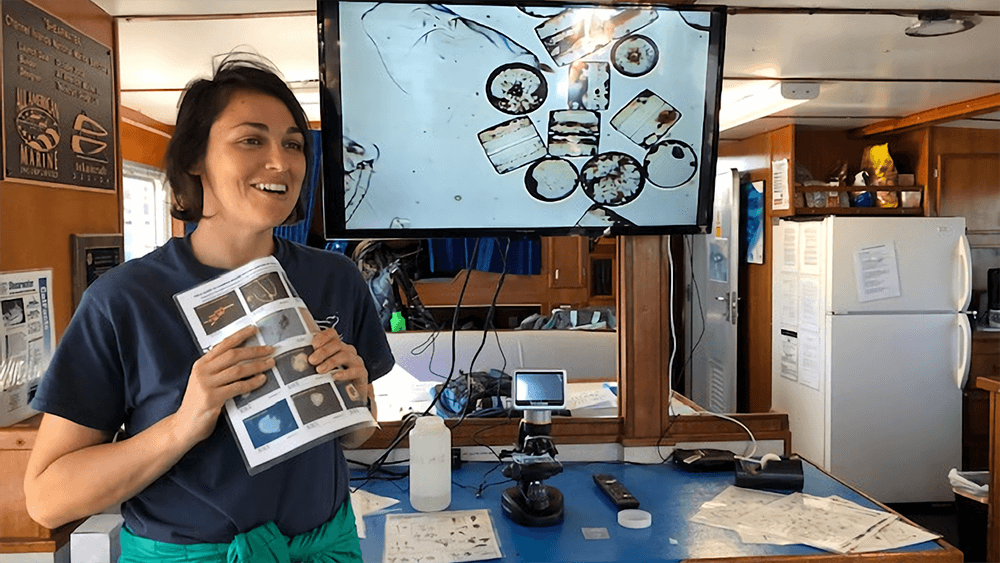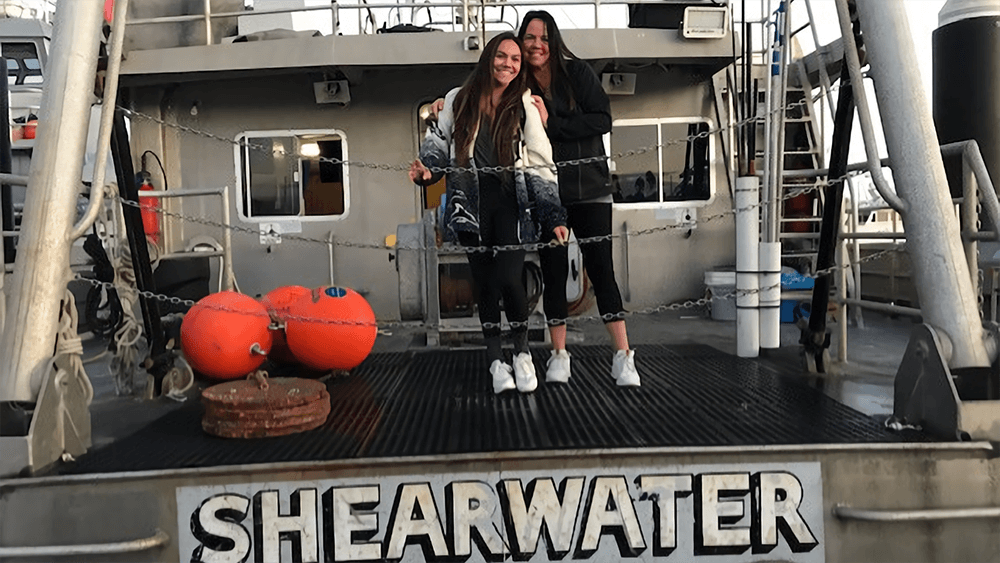Teachers at Sea
Each year sanctuary educators bring local elementary through high school teachers out for day trips onboard our research vessel (R/V) Shearwater. During these excursions, teachers participate in hands-on, place-based floating lab activities that support implementation of Next Generation Science Standards. Teachers conduct plankton tows, view plankton under a video microscope, pilot remotely operated vehicles, sample water quality parameters such as pH and salinity, learn about current sanctuary research, and gain knowledge and appreciation for our ocean ecosystems. These field experiences provide them with tools and resources to engage their students in learning more about the sanctuary and the importance of protecting our special ocean places.

The sanctuary also works with NOAA's Teacher at Sea Program to provide individual teachers with more in depth, hands-on, real-world research experience giving them unique insight into oceanic and atmospheric research crucial to the nation. The program provides a unique opportunity for kindergarten through college-level teachers to sail aboard NOAA research ships to work under the tutelage of scientists. Channel Islands National Marine Sanctuary also supports NOAA Teachers at Sea onboard R/V Shearwater as well as larger NOAA ships.

Our current Teacher at Sea, Jenn Sportsman, is a high school science teacher at Ernest Righetti High School (ERHS), a Title 1 school with a diverse student population in Santa Maria, California. She is working with the sanctuary research team on a Soundscape Project that focuses on how sound - biological (organisms), physical (wind and waves), and anthropogenic (human activities) - affects organisms who use sound to communicate, find prey, and/or reproduce. As part of this project, hydrophones are deployed underwater at strategic sites around the Channel Islands. These hydrophones are retrieved every few months, the data downloaded and analyzed, and the hydrophones redeployed. By participating as a NOAA Teacher at Sea, Jenn's hope is to bring the joy of ocean exploration to her students and reveal how marine scientists work in the field. As part of her experience, she will develop place-based, phenomena-driven curriculum focused on the undersea soundscape.
To find out about at-sea opportunities for teachers within Channel Islands National Marine Sanctuary, please contact: laura.francis@noaa.gov.

